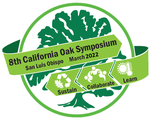#43

Morgan Doran, UCCE Capitol Corridor
The University of California recently unveiled the next evolution of the Ranch Water Quality Planning (RWQP) outreach program. Since its inception in 1995, the RWQP program has delivered more than 80 short courses in 35 counties to over 1,000 ranching and community members, resulting in more than two million acres of rangeland, including oak woodlands, placed under water quality plans throughout California. RWQP short courses have been highly dependent on University of California Cooperative Extension academics to organize and deliver workshops using a flexible curriculum framework to adapt educational content to local issues and regulatory programs. The updated RWQP program centers on a multi-media package that enables UC Cooperative Extension (UCCE), and non-UCCE people and organizations alike, to organize and convene a series of locally-relevant RWQP workshops with the purpose of coaching ranchers and land managers to build their own ranch water quality plan. The core of the package is a RWQP Instructor’s Guide and Lesson Plan that consists of nineteen lesson plans organized into six learning modules. A key resource for workshop planners are the twenty-nine educational and instructional videos curated on YouTube and available to augment the content of planned workshops. The RWQP Instructor’s Guide is available as a downloadable PDF document and on the UC Rangelands website. The Guide provides the resources and tools to plan and implement Ranch Water Quality Planning workshops and field days for grazing livestock producers, agency staff, and other stakeholders interested in grazing management and water quality. These new resources provide a wealth of contemporary information about water quality management on rangelands based upon more than thirty years of research and education conducted by UC Cooperative Extension and partners. This presentation reviews the evolution of the RWQP program and the intended use of the Instructor’s Guide, and demonstrates how to access and use the Instructor’s Guide and its major components.
